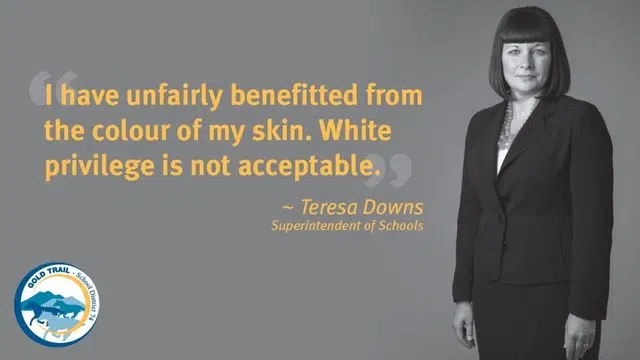
In the Gold Trail white privilege debate, both sides are right
THE DEBATE OVER WHITE PRIVILEGE has reached a tipping point in Ashcroft and Cache Creek.
When Gold Trail School District Superintendent Teresa Downs and her administration decided to put up a set of posters touching on white privilege, they were hoping to start a conversation.
They never could have predicted it would result in an uproar.


